Using the PCT Model to Diagnose, Treat and Monitor Project Health

4 Mins
Published: January 11, 2023

How do you know when a change is progressing well? Which tools do you use to diagnose problems and identify critical risks? Evaluating project health based on gut feelings, subjective opinion, or even feedback from organizational leaders can lead you down the wrong path without knowing it. The Prosci Change Triangle (PCT) Model is a simple yet powerful framework that shows the four critical aspects of any successful change effort and how they are interrelated. Together with the PCT Assessment, the model provides a focused way to evaluate, track and gauge the health of Success, Leadership/Sponsorship, Project Management and Change Management.
Prosci Change Triangle (PCT) Model and PCT Assessment
Calvin Coolidge, the 30th president of the United States, once said, “Those who trust to chance must abide by the results of chance.” The PCT Model takes the chance out of change because it helps you understand what successful change needs, whether you’re missing important aspects, and what to do about it.
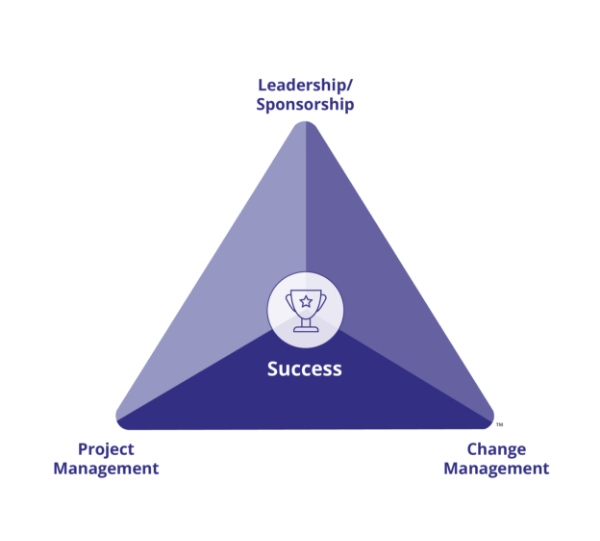 Prosci Change Triangle (PCT) Model
Prosci Change Triangle (PCT) Model
Need to strengthen your skills with Prosci's body of knowledge,
so you can improve the health of your projects?
Applying the PCT Model and PCT Assessment
Here are seven ways you can apply the PCT Model and PCT Assessment to effectively diagnose, treat and monitor the health of your projects and initiatives:
1. Conduct assessments
Assessing your project with the PCT Assessment tool gives you clear insights into the health of each of the three corners of the PCT Model, as well as how well each area supports project success. Answering the 40 diagnostic questions in the PCT Assessment gives you an informed sense of the overall direction of an initiative.

2. Evaluate project health
Making sense of the assessment outputs, also known as the PCT Profile, helps you draw insights and conclusions and start to understand what your project needs. Often, we can say generally that one project is going well, and another is not going so well. But having a diagnostic assessment, a way to make clear sense of the project’s health, shows you precisely where to focus your attention.
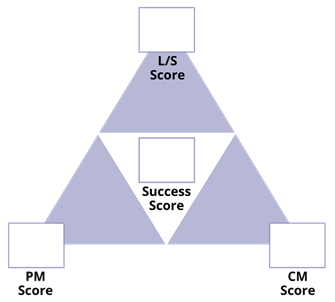
PCT Profile
3. Identify risk factors
Once you evaluate overall project health, you can start to look specifically at the areas you need to improve. The PCT Assessment’s simplified one-two-three scoring enables you to hone in on troublesome areas and quickly identify the high-risk factors that need attention.
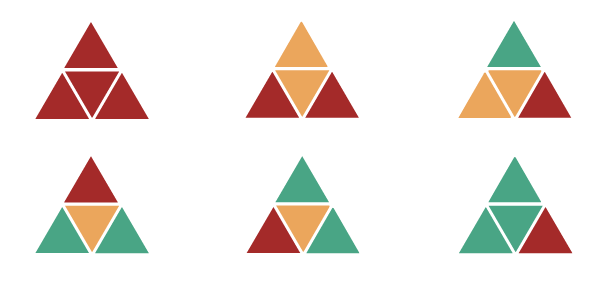
PCT Profiles
4. Drive next steps
When you know the risk factors for the initiative, you can use the insights to drive your next steps. After reviewing the assessment’s one-two-three scoring, you can clearly identify the low-scoring factors and build action steps to address each. For example, you might believe you have fully defined your adoption-and-usage objectives, but if you score a one on any of these factors, the objectives are not adequately defined. What are you going to do about it? Who do you need to get in the room? What questions do you need to ask to move forward?
5. Track progress over time
The PCT Model and PCT Assessment are very helpful for tracking project health across the project’s lifecycle. For example, you can take a diagnostic snapshot of project health during initiation, during design, during development, during deployment, at the end of planning.
When we coach clients in our advisory engagements, we show them how to set up a project and identify on the calendar when it makes sense to do more diagnostics because scores will change. As the health of the project changes over time, so does the resulting PCT Profile—and so does the likelihood of meeting objectives, delivering results and outcomes, and completing projects on time and on budget.
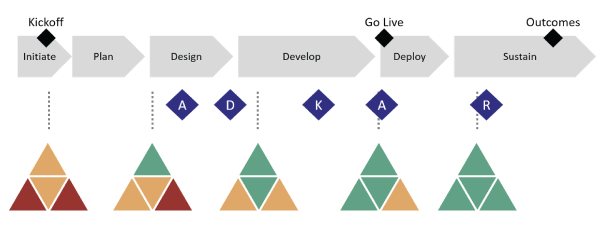
6. Examine the portfolio
Clients also compare PCT Assessment scores across multiple projects. Let’s say you have a project portfolio of seven projects underway in your organization. If you plot the PCT Profile relative to where each of those seven projects shows up on a risk-versus-investment graph and share it with a team of senior leaders, your only job will be to step to the side and let them talk. The insights and implications will be so clear, your leaders will immediately identify the organization’s competencies and deficiencies. Looking at many projects side by side offers a panoramic view of the portfolio’s health.
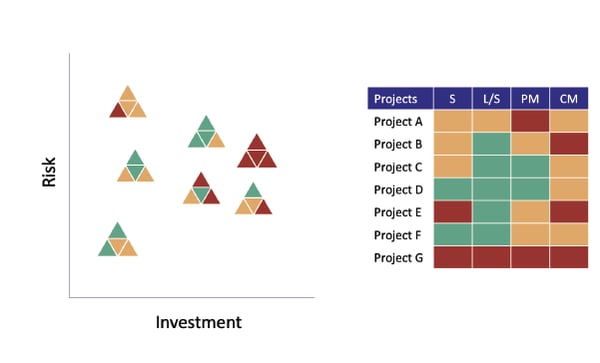
7. Create shared vision
This is one of the most impactful, valuable aspects of the PCT Model. Suppose you are sitting around a table with the project team. You've got a sponsor, you've got your project manager, you’ve got a couple of solution subject matter experts, and you’ve got some representatives from the business. Getting everyone on the same page about what you need to do to drive the initiative forward is one of the most important steps you can take. The PCT Model provides the foundation for clarity and alignment, enabling you to work together toward the objective you identified as success at the center of the triangle.
There is nothing more powerful than to get people on the same page, nothing more distracting than having two people on different pages, and nothing more devastating than having people thinking they're on the same page when they’re not. The PCT Model helps you create the shared vision to get on the same page about what you all need to realize successful outcomes from your most important change initiatives.
"Empowering the individual when there is a relatively low level of alignment worsens the chaos and makes managing the team even more difficult.” —Peter M. Senge
Use the Prosci Change Triangle (PCT) Model to Protect Project Health
Management guru, Peter Senge, offers us a great observation about how empowerment without alignment only amplifies the chaos. It’s hard to collaborate successfully as a team if we’re not moving toward the same goal. The Prosci Change Triangle (PCT) Model puts success at the center of the model because it’s the problem you need to address, the improvement you need to make, or the opportunity you’re looking to seize. Once you define and articulate success for your project changes, you can apply the PCT Model to clearly diagnose and treat project health and move toward success together.



